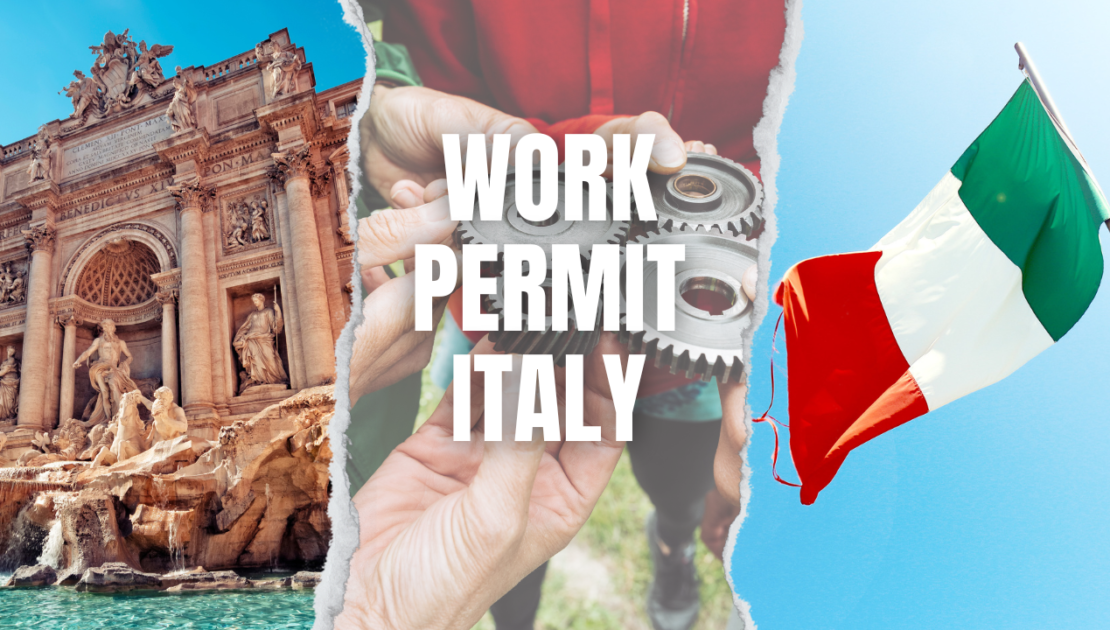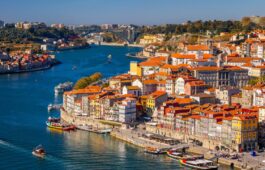- 16 April 2024
- The Migration Bureau
- No Comments

How to apply for Work Permit in Italy
The Italy work visa process stands out for its relative simplicity compared to other countries. It’s one of the easiest work visa to acquire in Europe. Once you secure your work visa allowing travel to Italy, you must apply for the Permesso di Soggiorno (residence permit) within 8 days.
About Italy
Italy is renowned for its rich history, stunning art, and delicious cuisine, making it an enticing destination for those seeking employment and a taste of the good life.
However, navigating the process of obtaining a work visa can be as complex. But fear not, as this guide is here to shed light on the steps you need to take to secure your Italian work visa in 2024.
Quota
The Decree of the President of the Council of Ministers of 27 September 2023 on the ‘Planning of legal entry flows of foreign workers into Italy for the three-year period 2023-2025’ was published in the Gazzetta Ufficiale on 3 October 2023. This decree established the new quotas for foreign workers who want to enter Italy to work.
The decree published on the Official Gazzette authorizes 452,000 entries over three years for seasonal and nonseasonal employment and self-employment of foreign nationals residing abroad.
These overall quotas got distributed over the three-year period as follows:
136,000 units for the year 2023;
151,000 units for the year 2024;
165,000 units for the year 2025.
Starting from February 29, 2024, it is possible to fill out applications on the Ministry of the Interior’s Portal to hire non-EU workers from abroad and to convert residence permits, within the framework of the 151.000 quotas provided for by the “quota decree” for the year 2024.
The 151.000 quotas are to be allocated amongst the following categories:
- 89.050 quotas for Seasonal Work in the sector of agriculture; hospitality and tourism industry reserved to certain nationalities;
- 61.950 quotas (of which 61.250 for non-seasonal employment in the sectors of road haulage for hire and reward, construction, tourism and hospitality, mechanics, telecommunications, food, shipbuilding, bus passenger transport, fishing, hairdressers, electricians and plumbers and work as an employee and 700 for self employment.
Dedicated time frame for applications
The Italian government only accepts applications for work permits during designated periods, and quotas are defined for granting work permits to foreign workers. These quotas are set by the Decree Flussi, the latest guide published on October 2023, setting quotas for 2023, 2024, and 2025.
Italian employers can submit applications for Decree Flussi 2024 from January 1st to March 31st, 2024.
Non-EU citizens can submit applications from April 1st to May 31st, 2024.
Nulla Osta
The Nulla Osta basically checks if the person applying for the work visa meets all the requirements and qualifications needed for the job. It makes sure there are no legal or administrative issues that could stop them from working in that specific position. It shows that the country where they want to work has carefully looked at their qualifications, made sure they follow all the immigration rules, and found their application acceptable. This document makes it easier to apply for the visa and confirms that hiring someone from another country follows all the rules of the country where they’ll be working. So, it’s really important for making international job opportunities run smoothl
Application process
The process of getting a Nulla Osta begins when an employee is offered a job in Italy and after that work visa.
These are the necessary steps to obtain the work visa for Italy:
- Job Offer- to start your process first you need to secure job offer from employer in Italy.
- The employer applies for a work permit ( called Nulla Osta) at the immigration office in their respective Italian province. Your future employer must submit an application for an authorisation to work at the One-Stop-Shop for Immigration in the Prefettura where the job will take place.
- Besides a work contract, foreign workers sign a residence contract, contratto di soggiorno, with their Italian employer. In this contract, the employer guarantees that the worker has suitable accommodation available, and commits to paying for any travel expenses in case the worker is expelled from Italy. This document does not replace the work contract, but it is necessary for the issuing of the work permit. An authorisation to work will be granted only if you come within the annual quota for non-EU workers.
- Once the work permit is granted, the employer may ask the immigration office to send all the necessary documentation to the Italian embassy or consulate where the employee will apply for a work visa.
IMPORTANT: The nulla osta is valid for 6 months. This means that you must enter Italy and apply for a residence permit within 6 months from the date of issue of the nulla osta.
- The employee will download and complete the Italy visa application form, collect all necessary documents, and submit the application in person at the Italian embassy or consulate.
- If the Italian authorities approve the application, the employee will have 1 month to pick up the visa and enter Italy. An Italy work visa can be valid for up to 2 years depending on the employment contract, but it can be renewed for up to 5 years.
- Within 8 days of entering Italy, the employee must apply for an additional permit to stay, referred to as a permesso di soggiorno, or residence permit, and the application can be obtained at a local post office in Italy.
Types of Italian work permit
In Italy, two primary types of work permits, known as “Subordinato” “Stazionale,” cater to distinct employment scenarios.
The Italian work visa process offers two primary types of permits: the Work Permit Subordinato and the Work Permit Stagionale, each tailored to different employment scenarios.
The Work Permit Subordinato is designed for foreign nationals seeking employment within the Italian job market under an employer-employee relationship. It necessitates a job offer from an Italian employer, who typically plays a central role in the application process. This permit is associated with a specific job and employer and is granted for a specific duration.
On the other hand, the Work Permit Stagionale, or seasonal work permit, caters to individuals intending to engage in temporary or seasonal employment in Italy. This permit is often sought in sectors such as agriculture, tourism, or other industries with seasonal demand fluctuations. It acknowledges the temporary nature of the work and is usually valid for the duration of the seasonal employment period.
Lavoro autonomo
Lets also remember about nulla osta for self emploed called
Work permit Lavoro autonomo for self-employed.
700 foreign citizens residing abroad are expected to enter in 2024 if they are entrepreneurs, freelancers, famous artists, or startup creators.
You must first be authorised by the competent administrative authority to perform the self-employed activity. Which authority you apply to will depend on the nature of your activity – for example the Chamber of Commerce issues authorisations to companies, while a special authorisation from the local departments of health is needed to open a restaurant or bar.
The One-Stop-Shop for Immigration and the Provincial Directorate of Labour verify that you come within the quota and that you have all the necessary requirements to carry out your self-employed activity.
Summary
Remember, securing an Italian work visa is an investment in your future. With careful planning, thorough preparation, and a dash of Italian passion, you can unlock the door to a rewarding experience in the heart of Europe.
So, whether you’re seeking traditional employment or looking to start your own business, there’s a path for you to work and thrive in Italy.
Stay tuned as we explore each step of the process in detail. Let’s make your Italian work dream a reality!










